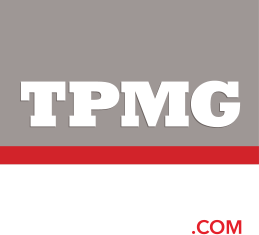February, 2024- Pairing risk management tools with actual market conditions helps build a more stable commodities strategy
Whether a company operates within a commodity risk management program or has simply always relied upon the physical market and inventory to manage price risks, it is important for stakeholders to understand the tools available to navigate these volatile times.
Commodity & Ingredient Hedging LLC offers educational seminars for metals industry participants with this purpose in mind. The most recent seminar in December featured various market participants with steel and copper exposure in a two-day format to introduce various exchange traded tools and practice using them in a historical simulation.
DEVELOPING A PROCESS
The first step in understanding how to manage risk is to have a fundamental understanding of the risk itself. (For more on this, see Modern Metals’ July 2023 issue.) Namely, it is critical to understand the magnitude and direction of risk within the company. For this reason, it is the first topic covered in our seminars—it is impossible to manage what we cannot measure. Most metals companies are purchasing inputs, transforming the product in some way, and selling product to a further processor or end user. It is generally true that these companies can and do have risk to both higher and lower prices, depending on the nature of their inventory and the pricing activity of their output.
Developing a consistent process for accounting for the continuous flow of purchases, inventory and forward sales through a transaction record helps everyone understand and visualize where risk lies in magnitude, direction and across time. This usually comes in the form of a daily position report for realtime tracking of risk.
TOOLS AVAILABLE
After a daily position report and process is established, the next question to answer is how to go about protecting against adverse price movements. For a company with upside price risk on inputs, the traditional method of managing risk has been the physical market. Physical contracts are fixedprice tools that set price and establish a counterparty for physical transaction. While these are both benefits, keep in mind that depending on the nature of the contract, you may or may not participate in a better price. Another consideration is credit availability, which may limit the duration of time that can be protected by using physical contracts.
Futures contracts are also fixed-price tools. As such, they convey both the right and the obligation to purchase or sell a standardized contract at a particular price. Futures prices are discovered in a transparent exchange between buyers and sellers and offer insight into market participants’ expectations of prices forward out in time. Futures are typically used as a financial instrument wherein the gain or loss on a futures transaction is added to the eventual cash price. Futures do not offer the opportunity to participate in better prices. Unlike most physical contracts, however, futures are flexible in that they allow for positions to be entered and exited when market fundamentals change.
Option contracts allow for flexibility by conveying the right, but not the obligation, to a particular price. This flexibility is desirable if the market participants perceive an opportunity for the prices to move in their favor, but that flexibility comes with a premium. The use of option contracts for metals has increased over the past several years, and for good reason. Options allow for the opportunity to participate in better prices in the form of lower input costs, higher output prices or both.
We have seen great success in our clients’ ability to use options for their own benefit or to pass on some of those savings to customers, increasing trust and gaining market share along the way. Options trading may be an ideal tool for those who perceive both risk and opportunity in the marketplace and who don’t want to commit to a fixed price.
There are important nuances to deciding which tools make the most sense to use at any given time. Seasonality, historical price levels, returns on investment and profit margin targets are some of the factors that must be considered. Markets can change quickly. Having the confidence to match the risk management tools and their associated strengths and weaknesses with the realities of what the market is offering is key to any risk management process.
Dustin Baker is manager, education and research, for Commodity & Ingredient Hedging LLC (www.cihedging.com/ ). There is a risk of loss in futures trading. Past performance is not indicative of future results.













